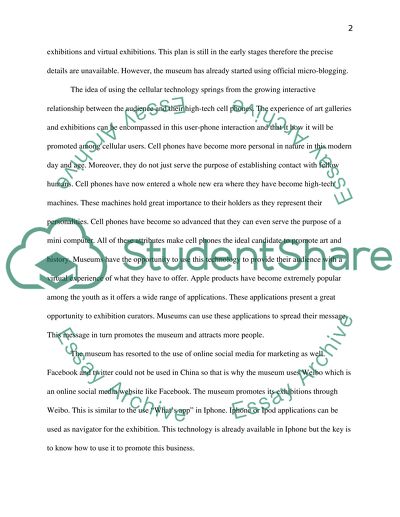Cite this document
(The Impact of Using New Technology in Art Exhibitions Assignment, n.d.)
The Impact of Using New Technology in Art Exhibitions Assignment. Retrieved from https://studentshare.org/marketing/1400667-the-impact-of-using-new-technology-in-art
The Impact of Using New Technology in Art Exhibitions Assignment. Retrieved from https://studentshare.org/marketing/1400667-the-impact-of-using-new-technology-in-art
(The Impact of Using New Technology in Art Exhibitions Assignment)
The Impact of Using New Technology in Art Exhibitions Assignment. https://studentshare.org/marketing/1400667-the-impact-of-using-new-technology-in-art.
The Impact of Using New Technology in Art Exhibitions Assignment. https://studentshare.org/marketing/1400667-the-impact-of-using-new-technology-in-art.
“The Impact of Using New Technology in Art Exhibitions Assignment”, n.d. https://studentshare.org/marketing/1400667-the-impact-of-using-new-technology-in-art.


